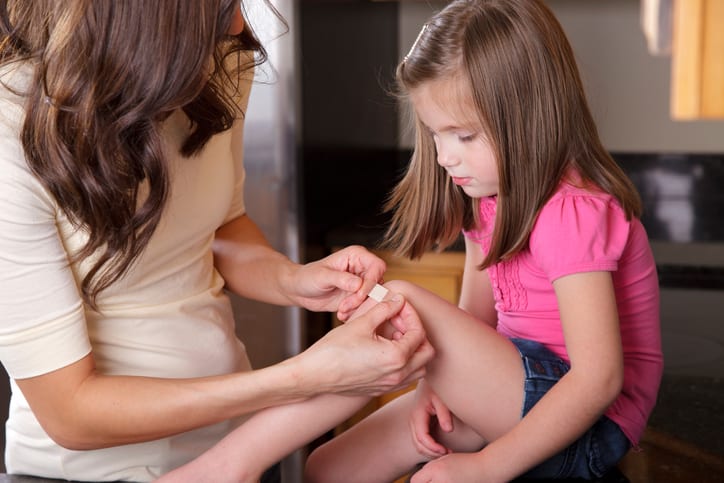Medicine or Malarkey: Will Covering Your Cut Help It Heal?
March 1, 2017

Because very minor wounds may not need to be treated by a medical professional, there’s an age-old debate concerning wound covering and proper healing. Some swear by covering these minor wounds with a fabric, plastic, or sheer bandage… and some don’t. It’s time to settle this “covered vs. uncovered” debate! What does covering that wound really do?
Decreases the Chance of Infection
Infections can cause the healing process to slow down or stop. They can even make the cut worse. Covering the cut keeps it clean, and it is the number one way to prevent infection.
Provides Needed Oxygen
Cuts need oxygen to heal. But the type they need doesn’t come from the air (surprise!). When damaged blood vessels begin to heal, they produce oxygen that promotes cell growth. Therefore, it’s best to cover the cut so it gets the right type of oxygen.
Keeps Scabs in Place
As they heal, cuts form scabs. Scabs naturally fall away when the new skin has formed. Removing a scab prematurely is never a good thing. It can lead to the cut opening back up and the healing process starting all over again.
Covering Prevents Further Injury
A dressing helps protect the cut while it is healing. Any type of further accident or injury is prevented when a proper dressing is placed over the cut.
Uncovering Has No Positive Benefits
Exposing the cut to the environment slows the healing process. Doing this also creates a dry environment that promotes cell death. As a result, the chances of infection are increased.
The verdict is in: covering a cut is the best way to help it heal. It’s important to remember that certain cuts do require the care of a physician or other qualified medical professional. If your cut won’t stop bleeding or looks like it’s infected, you need to seek immediate medical attention. Also, the deeper the cut, the more likely it needs to be treated in a hospital emergency department.
Our providers at CareSpot Urgent Care have the expertise required to handle minor wound care and sutures. If or when you need help, you can walk-in, give us a call, or schedule an appointment online.
